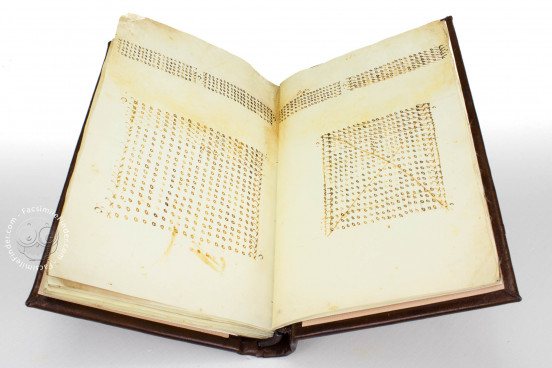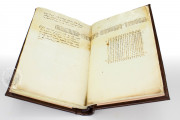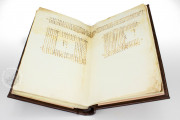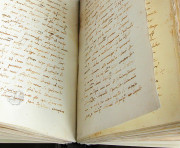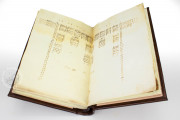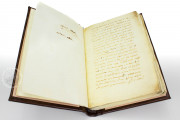The main testimony of Machiavelli’s work is composed of miscellaneous manuscripts owned by the Biblioteca Nazionale in Florence containing five autographed fragments of the "Dell'arte della guerra".
The manuscript from the library of the Strozzi family, acquired in 1786 by Grand Duke Pietro Leopoldo, was assigned to the Magliabechiana Library and then, at the end of the 19th century, was placed in its current location in the Banco Rari.
The codex is made up of 89 folios (cc. 25r-118v) numbered by hand in Arabic numerals, in the top margin at the center of the sheet. The writing comes from a period when the text was still being processed and has additions and interventions; the writing, initially neat, becomes increasingly hurried, with corrections and marginal additions.
There are also several spelling corrections by another hand, which confirm the theory of a language “review”: the text was probably submitted to “an appointed editor using Giunti typography”.
The dialogue, probably started between 1519 and 1520 and then completed by Giovanni Gaddi on September 15th, 1520, is dedicated to Lorenzo di Filippo Strozzi and is set in the circle of friends of the Rucellai family, gathered at the famous Oricellari gardens, where Machiavelli was often present.
The protagonist of the dialogue, which is divided into seven books, is the Roman "condottiero" Fabrizio Colonna. As an expert man-at-arms now advanced in years, he expresses his convictions that the Italian military needs to be reformed, based on the Roman military model, but excluding the use of mercenary troops, who proved unreliable and harmful on several occasions.
In the treatise, central themes of Machiavelli's concepts are often recalled, with references to previous works (Cagione dell’Ordinanza, Il Principe, I Discorsi), such as the condemnation of the use of mercenaries and the creation of a well-ordered and disciplined citizen "militia", able at any moment to defend the territory from enemy attack.
The author then proceeds with a close and detailed analysis of the techniques used by the Romans in the development of the army (selection, training and armament of the soldiers), the arrangement of the troops during a battle, housings, fortifications, etc., suggesting precise and detailed rules for an effective defense strategy.
In an appendix to the text, Machiavelli drafts diagrams of military deployment, where the battalions are marked with a Greek letter and displayed in the ideal arrangement of the army in a “standard battle”.
We have 1 facsimile edition of the manuscript "Machiavelli's Art of War": Dell'Arte della Guerra di Machiavelli facsimile edition, published by Imago, 2014
Request Info / Price
